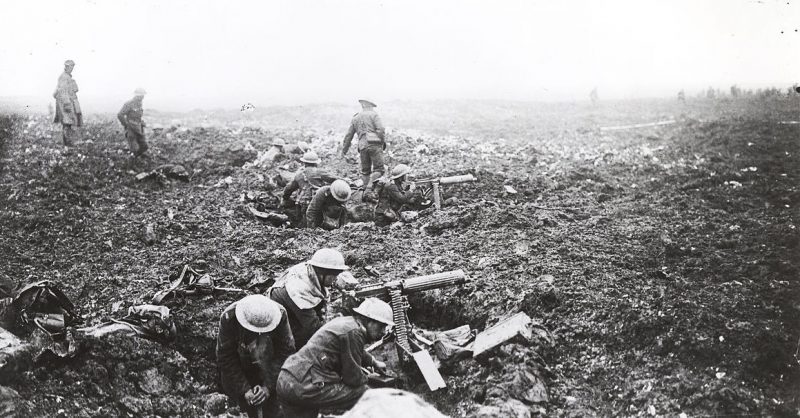When Doug Reece first found the gun, it was a rusted wreck. The supporting frame was so rotten the gun was bending in half. You couldn’t roll it because the wheels would have collapsed. Eight years of hard work later and the German 105mm howitzer looks like it just came from the Krupp Industries assembly line.
The unveiling at the Lake Street Armoury in St. Catharines, in Ontario, Canada, capped the project which Reece led since 2009. Various individuals and organizations all came together to restore the gun that had been used in the Battle of Vimy Ridge. It was captured by the 7th Battalion of the Canadian Expeditionary Force on April 13, 1917 and used by the Canadian 23rd Howitzer Battery to continue attacking the retreating Germans.
For most of the next 100 years, the gun was on display outside by the cenotaph in Niagara-on-the-Lake and then moved next to a gun shed at Butler’s Barracks. Over the years the gun was allowed to deteriorate.
The unveiling ceremony took place in front of a crowd of dignitaries and volunteers that worked on the restoration. Garry Guitard is the chairman of the Lincoln and Welland Regiment Foundation. He said that making one new wheel for the gun took months using 100-year old wood.
“You needed a special kind of hardwood. It couldn’t be just oak. It had to be a specific type,” Guitard said.
They were able to keep the cost of the restoration down to $30,000 due to the hard work of the many volunteers. For the next few years, the gun will be on display at the Lake Street Armoury. When the $15-million Niagara Military Heritage Centre opens, the gun will be permanently displayed there.
The center will be the home for the Lincoln and Welland Regiment Museum which preserves the 200-year history of the Lincoln Welland Regiment. The facility will be built on property owned by Parks Canada on Lakeshore Road in Niagara-on-the-Lake.
The project already has displays available for school groups, children and large audiences, including tour groups. The project already has sponsorship commitments of over $500,000 and a commitment from another sponsor for over $1,000,000. A nation-wide fundraising campaign to cover as much of the project costs as possible.
Guitard says that the dollar amounts aren’t as large as they sound when you consider that this is a legacy project. He says that every Canadian should want to have their name on the wall of the museum. Anyone who wouldn’t, he considers to be denying the history of the country and also denying the values of the country, St. Catharines Standard reported.
He hasn’t ruled out government funding but hopes that corporations in Canada will understand that the museum will serve the citizens of tomorrow who will be investing in those companies in the future.
